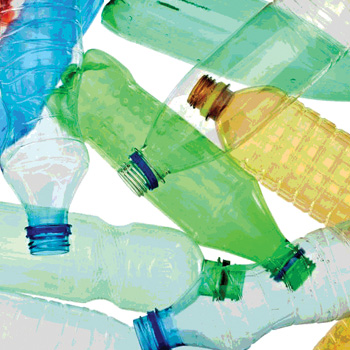The Increasing Scrutiny of Food Packaging

I have been writing about the increased scrutiny of chemical substances used in packaging for a number of years now. In a 2009 article, I noted that factors such as a well-mounted attack by an environmental organization, a less-than-stellar report from the National Toxicology Program, over-the-top media attention and consumer outcry resulted in the deselection of bisphenol A (BPA) by some national retailers and the consideration (and sometimes passage) of legislation to ban products containing BPA. All of this was taking place despite the U.S. Food and Drug Administration (FDA) and other governmental bodies determining that current use levels of BPA in packaging materials did not present undue health or safety issues. In 2013, FDA did amend the food additive regulations to narrow the scope of uses for polycarbonate resins to exclude infant feeding bottles and spill-proof cups (so-called sippy cups) from the type of applications authorized under the regulation. However, this was done at the behest of the industry on the basis that such uses no longer existed and therefore the clearances were no longer needed.
A few years later, in 2013, I cautioned that since much of the science surrounding endocrine disruptors is still not well understood, chemicals showing only slight effects could be branded as inherently harmful even when they are not. Furthermore, I noted that the view that the mere presence of, or exposure to, a chemical substance is considered harmful was being applied to packaging. As this trend has continued, more attention is also being directed at how FDA evaluates the safety of food packaging materials. This article focuses on the current challenges FDA is facing with respect to questions about the safety of food packaging materials and how the agency is responding.
In the food additive regulations, FDA has defined “safe” or “safety” as:
“[T]here is a reasonable certainty in the minds of competent scientists that the substance is not harmful under the intended conditions of use. It is impossible in the present state of scientific knowledge to establish with complete certainty the absolute harmlessness of the use of any substance. Safety may be determined by scientific procedures or by general recognition of safety.” [21 C.F.R. Section 170.3(i)]
FDA further states that it will consider a number of factors in determining safety, including:
• The probable consumption of the substance and of any substance formed in or on food because of its use
• The cumulative effect of the substance in the diet, taking into account any chemically or pharmacologically related substance or substances in such diet
• Safety factors that, in the opinion of experts qualified by scientific training and experience to evaluate the safety of food and food substances, are generally recognized as appropriate
While FDA continues to use this standard for assessing the safety of food packaging materials, changes are taking place. So-called nongovernmental organizations (NGOs), which usually refer to environmental or other public interest groups, are becoming more aggressive in attacking the safety of food packaging materials. They are doing this both through citizen petitions and lawsuits when they feel FDA has not acted on their petitions in a timely manner. In addition to changes being made due to NGO activism, FDA is requiring additional testing and imposing new requirements.
Packaging for Infant Formula Requires More Testing
One area where FDA has made changes in its review of food contact notifications (FCNs) involves clearances of packaging materials for infant formula and breast milk. In the fall of 2010, FDA began to include restrictions in new FCNs on the use of food contact substances (FCSs) in can coatings for infant applications. Notably, during the first 10 years of the program, FCNs did not include restrictions on infant applications. By the fall of 2013, FDA expanded infant-use restrictions to most, if not all, new FCNs. To date, FDA has not applied infant restrictions retroactively. The agency also has included restrictions on FCNs for FCSs used in repeat-use items for infants, such as nipples, bottles and sippy cups.
These restrictions are reflected in the “Intended Use” and “Limitations/Specifications” provisions of FCNs, where the specific language used by FDA has evolved over time. Currently, unless a notifier explicitly demonstrates the safety of the FCS for use in contact with infant formula and breast milk, or use of the FCS is obviously not one that would involve an infant application, its use is excluded in the FCN clearance.
Concerns about enhanced sensitivity of infants during critical stages of development have led to the use of different assumptions for exposure assessments by FDA, in addition to potential increased toxicity data requirements. Since formula may be the sole source of nutrition for infants, FCSs may be contacting 100 percent of the diet for infants 0 to 6 months of age. This could result in an infant exposure 70 times greater than an adult exposure for the same FCS. Therefore, while the default FDA body-mass-to-food-intake ratio for adults is a 60-kg individual with an intake of 3 kg of food per day, FDA considers the typical body weight of an infant up to 6 months to be 0.6 kg with a daily intake of 0.9 kg of food. FDA also expects notifiers to make adjustments to reflect exposure specific to infant applications when conducting safety assessments for carcinogenic impurities in an FCS.
FDA Delists Previously Cleared Substances
With respect to changes due to citizen petitions submitted by NGOs, FDA recently removed the clearance for several long-chain perfluorinated compounds (PFCs) and proposed amending the food additive regulations to no longer authorize the use of seven synthetic flavoring food additives. A petition filed in March 2015 led to FDA’s amending the food additive regulations in January 2016 to no longer permit the use of three grease-resistant substances in food packaging materials such as pizza boxes, microwave popcorn bags and sandwich wrappers. The three substances are PFCs (at least eight carbons in length).
In reviewing the petition to delist these three compounds, FDA could not determine dietary exposure from food contact use of the substances due to a lack of adequate migration data. The agency also noted that there are no available toxicological studies showing reproductive or developmental toxicity for these specific chemicals; however, new data are available demonstrating the toxicity of structurally similar substances. As a result, FDA concluded that there was no longer a reasonable certainty of no harm for the food contact use of the three substances containing long-chain perfluoroalkyl ethyl. While the three substances have not been used in the U.S. since 2011, the petitioners were concerned about food packaging made containing these substances being imported from other countries.
Also in January 2016, FDA requested comments on another petition—submitted by several NGOs and one individual—proposing that the food additive regulations be amended to no longer authorize the use of seven synthetic flavoring food additives (benzophenone, ethyl acrylate, eugenyl methyl ether, myrcene, pulegone, pyridine and styrene) and to establish zero tolerances for the additives. The petitioners claimed that these substances are carcinogenic based on new data, including conclusions by the National Toxicology Program and the International Agency for Research on Cancer.
While the petition deals only with the use of these substances as synthetic flavoring food additives, FDA warned that its response to the petition could also possibly affect other regulations and clearances impacting these additives. For example, benzophenone is also approved for use as an indirect food additive, and ethyl acrylate, pyridine and styrene are permitted for use by other food additive regulations and FCNs as reactants or manufacturing aids. However, the agency noted that such uses are not the subject of these food additive regulations and FCNs and, as such, may not necessarily be affected if this petition results in a regulation.
GRAS under Attack
Another area where we may see changes involves generally recognized as safe (GRAS) substances. GRAS substances are excluded from the definition of “food additive” and, thus, are exempt from the premarket clearance requirements that apply to food additives. (Food contact substances that migrate to food above a de minimis amount are considered food additives.) Over the last few years, a number of groups have criticized the GRAS program, alleging safety concerns with some GRAS substances.
By way of background, the GRAS exclusion was established by the Food Additives Amendment Act of 1958, which defined a GRAS substance as “generally recognized, among experts qualified by scientific training and experience to evaluate [their] safety, as having been adequately shown through scientific procedures (or, in the case of a substance used in food prior to January 1, 1958, through either scientific procedures or experience based on common use in food) to be safe under the conditions of its intended use.” (21 U.S.C. Section 321)
While the same quality and quantity of scientific data required to support a food additive petition are needed to support a GRAS determination, there is no requirement that the data be provided to FDA prior to marketing a product on this basis. In 1958, FDA published a list of GRAS substances in the Code of Federal Regulations; however, many substances that were considered GRAS by the food industry were not included in that list. As a result, when manufacturers needed to show a customer that a self-determined GRAS position was justified, they would write the agency and request an informal opinion letter.
FDA stopped issuing informal GRAS opinion letters in 1970 and, in 1972, conducted a rulemaking to establish a voluntary GRAS affirmation petition process. Under the process, an individual could petition FDA to review and affirm the GRAS status of a substance. FDA would then publish a notice of the filing in the Federal Register, request comments, conduct a comprehensive review and then publish a final rule in the Federal Register. However, once the GRAS petition was “accepted for filing,” common industry practice held that the substance could be marketed at that point as GRAS without objection by FDA, which was clearly the case as often FDA did not even bother to complete the petition review process with the publication of a final rule.
The next development took place in 1997, when FDA proposed a GRAS notification rule. Under this program, a manufacturer notifies FDA that a particular use of a substance has been determined to be GRAS. While the rule was never finalized, the agency started accepting GRAS notifications in 1998 and effectively suspended the GRAS petition process. After evaluating the data, FDA informs the notifier that: it has no questions currently as to the basis for the determination, or it has determined that the notice does not provide a sufficient basis for a GRAS determination. FDA may also cease to evaluate the GRAS notice at the notifier’s request.
Much of the criticism of FDA’s GRAS program focuses on the fact that FDA has not issued guidance on how to document a GRAS determination. A Government Accounting Office (GAO) report, Food Safety: FDA Should Strengthen Its Oversight of Food Ingredients Determined to Be Generally Recognized as Safe (GRAS), issued in February 2010, mentioned that the 1997 proposed rule on a voluntary notification program had yet to be finalized. Furthermore, said the GAO, while FDA regulations require that the GRAS status of a substance be reconsidered as new scientific information emerges, the agency has not systematically reconsidered GRAS substances since the 1980s. One of the GAO’s recommendations was that FDA should develop a strategy to require any company that conducts a GRAS determination to provide FDA with basic information about the determination. FDA did request further comments on the proposed 1997 GRAS notification procedure in December 2010.
Concern about FDA’s lack of sufficient information to assess the safety of GRAS substances was also expressed in a November 2013 Capstone Report by the Pew Charitable Trusts, entitled Fixing the Oversight of Chemicals Added to Our Food. This report recommends that Congress update the Food Additives Amendment of 1958 to ensure that FDA approves the use of all new chemicals added to food and reviews changes to existing uses of previously approved additives.
An attack on FDA’s GRAS notification program was launched in February 2014 when the Center for Food Safety filed a lawsuit to vacate the 1997 proposed rule, which would effectively reinstate the petition process until FDA promulgates a final GRAS rule. Under a Consent Decree issued by the U.S. District Court for the District of Columbia, FDA agreed to issue a final rule on the GRAS review program by August 31, 2016. NGOs retained the option of pressing for further action, claiming FDA overextended its authority, if they are unhappy with the results.
Another development took place in August 2014, when the Grocery Manufacturers Association (GMA) announced a GRAS modernization initiative that will involve the development of a publicly available standard (PAS) for GRAS determinations. The PAS will be developed by an independent body of experts in a public process and will be suitable for accreditation. Additionally, a GMA-sponsored, publicly accessible database will be established that will list information on GRAS assessments conducted by the food industry. At this point, the database is planned for direct additives only.
Conclusion
The attacks on the safety of food packaging materials will continue to escalate. Speaking at Keller and Heckman’s 16th annual Food Packaging Law Seminar, October 14, 2015, in Arlington, VA, Dr. Dennis Keefe, director of the FDA Office of Food Additive Safety, stated that the agency needs to look at some of the decisions it made 30 to 40 years ago and review them based on current scientific understanding. He also suggested that cooperation between FDA and industry is necessary for food companies to gain the confidence of consumers. He added that FDA needs information about the safety of chemicals in a more timely manner.
As questions continue to arise about the safety of food packaging materials, the food packaging industry will need to have solid science to show that their products are safe, and they will need to effectively communicate this information with government regulators and consumers. For substances that capture the public limelight, if this cannot be accomplished, we could see the next deselection occur, as happened with BPA.
George G. Misko, Esq., is a partner at Keller and Heckman and a Food and Drug Practice Group leader.
Looking for a reprint of this article?
From high-res PDFs to custom plaques, order your copy today!








